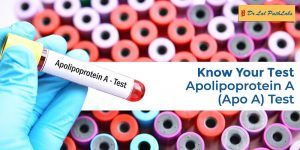Haemoglobin Test

Haemoglobin, a crucial protein in red blood cells, helps transport oxygen throughout the body. The haemoglobin test reflects the amount of haemoglobin in the blood and is often included in a complete blood count (CBC). Another vital test related to haemoglobin is the Glycosylated Haemoglobin (HbA1c) Test, which assesses long-term blood sugar levels in individuals with diabetes.
What is Haemoglobin Test?
It is a standard blood test that measures haemoglobin levels. It helps assess overall blood health, screen for disorders like anaemia, and monitor conditions affecting red blood cells.
Glycosylated Haemoglobin (HbA1c) Test
The haemoglobin A1c test is specifically used to monitor blood sugar levels over time in individuals with diabetes. It checks the percentage of haemoglobin bound to glucose molecules, reflecting average blood glucose levels over the past two to three months.
What is the Purpose of the Haemolobin Test?
The haemoglobin test and the glycosylated haemoglobin test serve distinct yet complementary purposes in assessing blood health and blood sugar control.
Haemoglobin Test:
- Routine Health Assessment: Part of CBC for assessing overall blood health screening for disorders like anaemia (low red blood cell count) or polycythemia vera (excessive red blood cell production).
- Investigation of Symptoms: Helps identify underlying blood-related issues causing weakness, fatigue, shortness of breath, or dizziness.
- Monitoring Medical Conditions: Used to monitor disease progression, this assesses treatment effectiveness and guides medical management decisions in conditions like anaemia or polycythemia vera.
Glycosylated Haemoglobin (HbA1c) Test:
- Diabetes Management: Monitors blood sugar control over time, which is crucial for managing diabetes effectively.
- Assessment of Treatment Effectiveness: Helps evaluate the success of diabetes management strategies, including lifestyle changes and medication adherence.
- Risk Assessment: Elevated haemoglobin A1c levels indicate poorer blood sugar control, increasing the risk of diabetes-related complications such as cardiovascular disease, nerve disease, kidney damage, and eye issues.
Risk Factors of Haemoglobin Test
For both the haemoglobin test and the HbA1c test, certain risk factors may influence the test results or the need for testing:
- Chronic Illnesses: Kidney, liver, or thyroid conditions can affect levels.
- Nutritional Deficiencies: Low iron, B12, or folate can cause anaemia.
- Diabetes Risk: Monitoring for blood sugar control and management.
- Genetic Factors: Conditions like thalassemia, sickle cell disease, or hemoglobinopathies affect haemoglobin.
- Medication Effects: Some drugs influence test results.
- Age and Sex Variations: Different norms based on age and gender.
- Lifestyle Impact: Smoking, alcohol, and altitude can alter levels.
- Pregnancy: Routine testing for anaemia due to increased blood volume and iron demands during pregnancy.
Procedure of Haemoglobin Test
The procedure for the haemoglobin test and the glycosylated haemoglobin test involves collecting a blood sample for analysis in a laboratory setting. Preparation for the test typically involves no specific dietary restrictions unless other blood tests requiring fasting are planned. During the test:
- A healthcare professional cleans the skin at the injection site (usually the arm or finger) with an antiseptic.
- A needle is used to draw a blood sample, which is then collected into a vial or tube.
- For infants, blood may be obtained through a heel or finger prick.
After the test, individuals may be asked to wait briefly to ensure there are no adverse reactions. The blood sample is then analysed in a laboratory.
The lab measures the haemoglobin level for the haemoglobin test, which is reported in grams per deciliter (g/dL). For the HbA1c test, the lab determines the percentage of haemoglobin bound to glucose molecules, reflecting average blood sugar levels since the previous two-three month
Interpreting Haemoglobin Test Results
Haemoglobin Test:
- Normal Range: The normal range for haemoglobin levels varies based on age, sex, and other factors. For adult males, a typical range is 13.2 to 16.6 grams per deciliter (g/dL), while for adult females, it’s 11.6 to 15 g/dL.
- Low Haemoglobin (Anaemia): Haemoglobin levels below the normal range may indicate anaemia, resulting from various factors such as nutritional deficiencies, chronic diseases, or genetic conditions.
- High Haemoglobin (Erythrocytosis): Elevated haemoglobin levels may signal erythrocytosis linked to altitude, smoking, dehydration, or certain medical conditions.
Glycosylated Haemoglobin (HbA1c) Test:
- Normal Range: The HbA1c normal levels are below 5.7%.
- Low Blood Sugar: Low levels of HbA1c are not a concern.
- High Blood Sugar: Levels between 5.7 and 6.4% indicate prediabetes, while levels above 6.5% suggest type 2 diabetes. Higher HbA1c levels in the prediabetes range signal a greater risk of type 2 diabetes.
Effectively using these test results empowers individuals to take proactive control of their health. It’s essential to consult healthcare professionals about the haemoglobin test price, as it can vary depending on location and insurance coverage.
FAQs
1. What are the 3 types of haemoglobin?
The three main types of haemoglobin are HbA (adult haemoglobin), HbA2 (a minor component in adults), and HbF (foetal haemoglobin).
2. How to improve haemoglobin?
Consume iron-rich foods, such as fortified cereals, leafy greens, and red meat, to improve haemoglobin levels. If advised by a healthcare professional, consider taking iron supplements.















